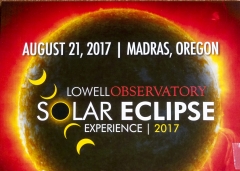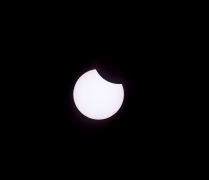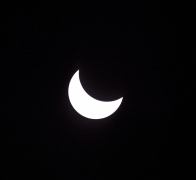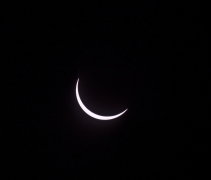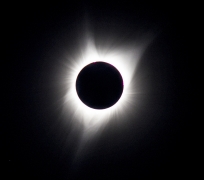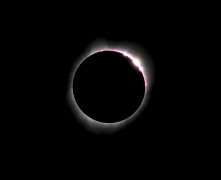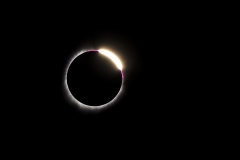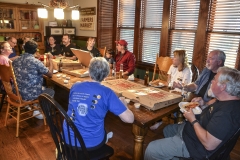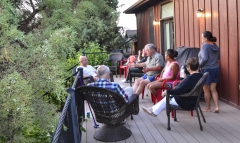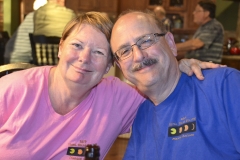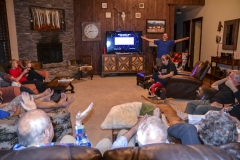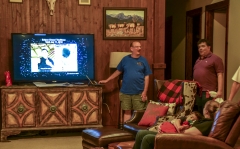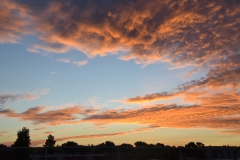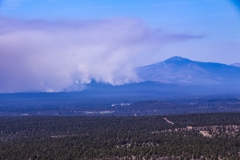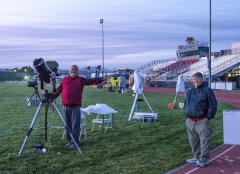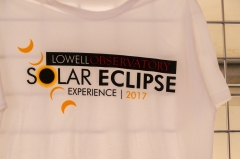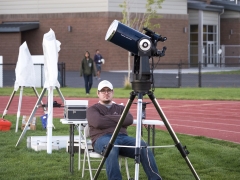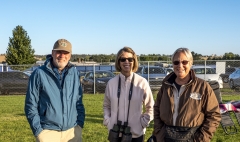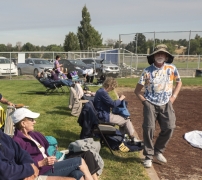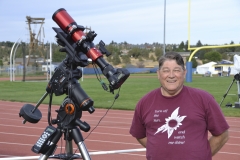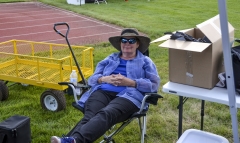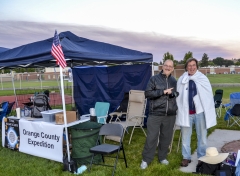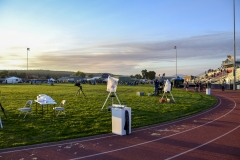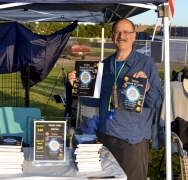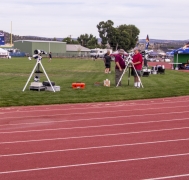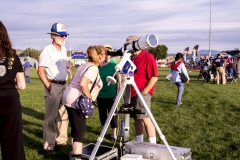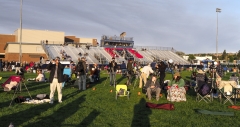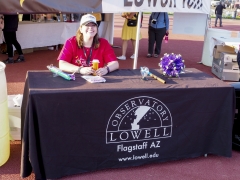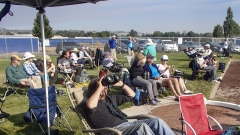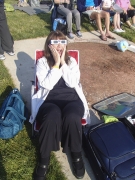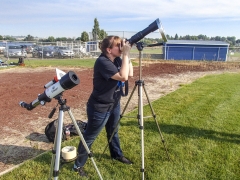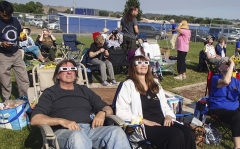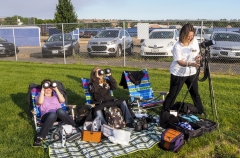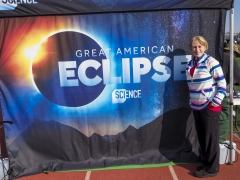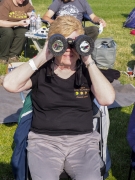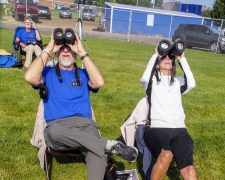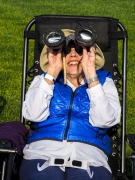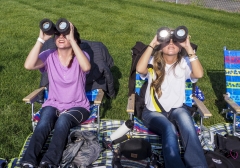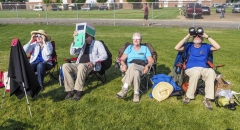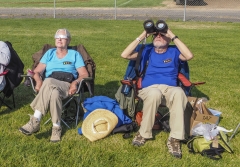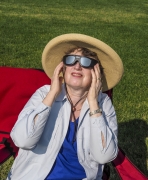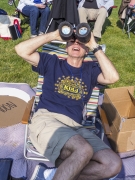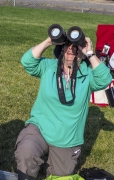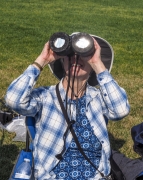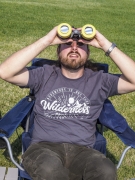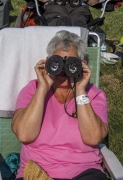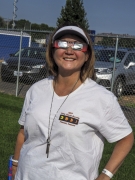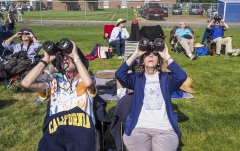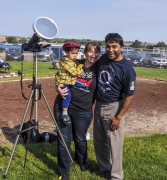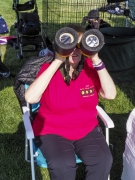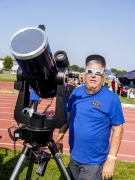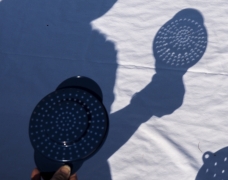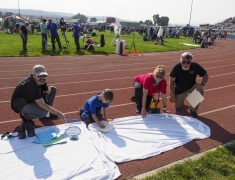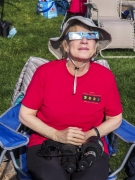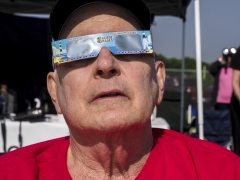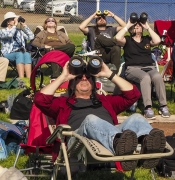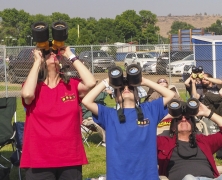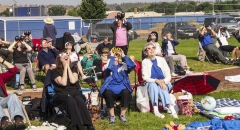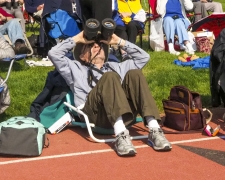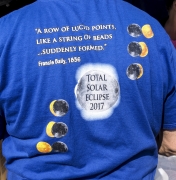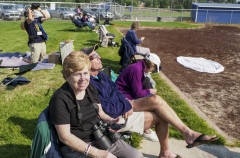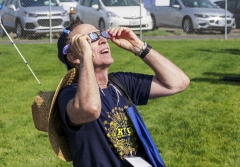We all should look up more often. Tens of millions of Americans pulled their heads out of their work and their cellphones this week to witness a rare total solar eclipse, which created an eerie midday twilight as it rolled 3,000 miles across the country, spooking the birds and cows and leaving vast crowds of normally crabby humans cooing and exclaiming like children. Even for those of us who had to settle for a partial eclipse, it was thrilling—a reminder that we are passengers on a rock swinging through the solar system in a celestial dance choreographed by forces beyond our control. Awe is an uplifting emotion. It is good to feel small, to see that beyond the mundane lies a great mystery.
Like most people, I look up too infrequently. But seeing the sky always changes my mood for the better. Look up: The heavens are full of wonders even when the Moon isn’t blocking the Sun. Every dawn and sunset is an astonishment of gorgeous light and startling, shifting color. All day, clouds tinged with gray, pink, and orange pass overhead like windblown thoughts, scudding across a canvas of depth-less blue. At night, countless starts silently smolder in the black infinity, many or most of them (we now know) orbited by their own necklace of swirling planets and moons. Is anyone looking back when you look up? Why is the universe so incomprehensively vast, with billions of galaxies, each containing billions of stars? Wondering about such things is somehow comforting—a welcome departure from the news, Twitter, and Instagram. This week, a great darkness fell upon America, and it was easy to understand why eclipses terrified the ancients, who saw them as portents of doom. But then the Sun returned, advising is: Light defeats darkness. This, too, shall pass.
William Falk, Editor-in-chief, The Week
_________________________________________________________________________________________
Also, for an additional excellent report on the 2017 eclipse and further photos and links, see Glen Schneider’s website at the address below…
You may have met our umbraphile friends friends Glenn Schneider and Craig Small at the Madras pizza party. Glenn is an Astronomer and Principal Investigator at UofA for the EXoplanetary Circumstellar Environments and Disk Explorer (EXCEDE). From 1994 he served as the Near Infrared Camera and Multi-Object Spectrometer (NICMOS; a second generation instrument installed on the Hubble Space Telescope) Project instrument scientist, at the University of Arizona’s Steward Observatory. Glenn, Craig and his crowd watched the eclipse from a different site in Madras (not the High School Football Field). Here is his website entry:
http://nicmosis.as.arizona.edu:8000/ECLIPSE_WEB/ECLIPSE_17/TSE2017_REPORT.html
__________________________________________________________________________________________

